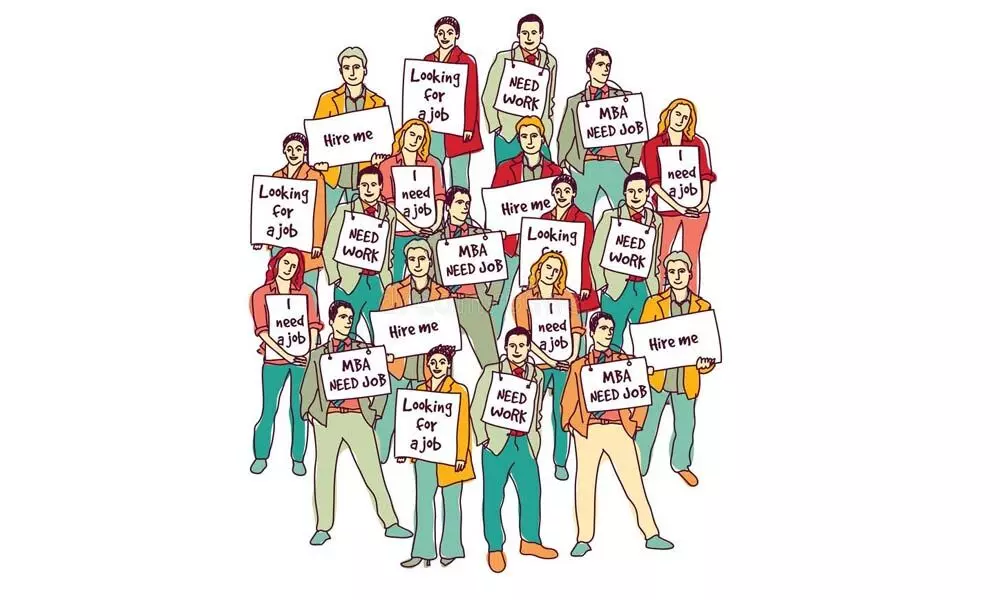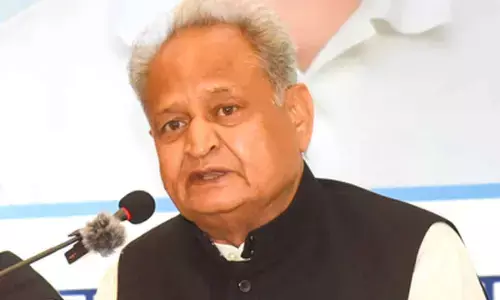Three steps for employment

Three steps for employment
The first cause for increasing unemployment today is technological change.
The first cause for increasing unemployment today is technological change. This has happened many times in human history. The invention of the motor cars let do the unemployment of horse cart runners. However, in course of time, more roads were made for running the cars, more jobs were created in manufacture and repair of cars and this led to higher growth rate and creation of more employment. The total employment in the transport sector in the motor car age would be more than the employment in the horse cart age.
Similarly, we can see a large number of jobs being lost to robots and artificial intelligence today. Whether these technologies will lead to more generation of employment as in the case of repair of cars will depend upon how much increase in growth rate will take place due to these technologies and whether new jobs are created in these new sectors. Unlike in the past, it is, nevertheless, possible that robots and artificial intelligence will lead to less increase in growth and less generation of employment leading to an increase in unemployment.
The second reason for increased in unemployment is that manufacturing is increasingly being undertaken by large industries where production is being undertaken with automatic machines. Thus higher growth rate is leading to less creation of employment. The production of jiggery, for example, required a large number of workers previously. Only 10 per cent of those may be required in manufacturing the same amount of sweeteners in a sugar mill. The crucial point is that new technologies displace labour directly but may yet lead to an increase in employment if there is a high increase in the GDP. Presently, we can see that a large number of jobs are being created in mobile repairing, plying of taxis, hotels, tourism, business process outsourcing and the like. The question is whether we can create enough number of jobs from this natural tendency of technological change to provide employment to the large number of workers who are entering the work force.
The major difference from the past is that at present very large numbers of workers are entering the labour force. The number of jobs being created appears to be far less than that which is required. The Periodic Labour Force Survey issue by the Central government says that between 2012and 2018 the urban unemployment rate increased three times. In 2018, the number of unemployed among those of 15-24 years age was 28.5% which was the highest among the major economies of world. The wage rate has also declined between 2012 and 2018. The real wages of the workers in the organised sectors declined by 1.7%. "Real wage" means that the wages may increase at a lesser rate than inflation. A worker may get Rs 110 this year in comparison to Rs 100 last year. But the price, say, of one meter cloth, may be Rs 115 this year in comparison to Rs 100 last year. The worker would be getting higher wages this year but the higher wage would buy less cloth. This is called decline in real wage.
The government has said that 70 lakh new persons joined the Employment Provident Fund Organization (EPFO) in 2018. It is doubtful whether these are new employment. The informal sector was badly hit in 2018 due to demonetisation and the implementation of GST and a large number of workers joined the EPFO. Thus, there was a shift in employment rather than creation of employment. Be that as it may, even if we assume that 70 lakh new jobs were created in 2018, that is still far short of what is required. At present, 120 lakh new workers are entering the labour force every year. Thus, even if 70 lakh jobs are being created every year, still 50 lakh persons joined the lines of the unemployed.
We need to take proactive steps and not rely on the spontaneous creation of jobs that takes place due to technological change in this situation. The first step the government needs to take is to reform the educational system. The difficulty is that at present most youth are interested only in obtaining certificate that would enable them to get a government job. The wages of government employees are so high that a primary teacher with lesser skills but a government job may earn Rs 70,000 per month while a more skilled nurse or a data entry operator without a government job may earn as little as Rs 15,000 per month. As a result, the youth are not interested in obtaining the skills such as those of nursing and data entry operator. They join the education only for obtaining a certificate. The only way to get the youth to obtain skills is to reduce the wages of the government servants so that the attraction of a government job is reduced and the youth get interested in obtaining skills that would enable them to earn income in the private sector.
The second step is to loosen the labour laws in the organised sector. There is a huge tendency to use automatic machines and less labour because labour laws are rigid and it becomes very difficult for an employer to remove a worker if she is undisciplined or inefficient or not required. A study done by the World Bank of East Asian countries says that more jobs were created in those countries where labour laws were flexible. Therefore, the government should reform the labour laws and make it possible for the businessmen to hire and fire workers as per their requirement. This will encourage the businesses to use workers instead of computers and machines.
The third step required is to provide fiscal incentives to the small industries. The cost of production of small industries is higher than the large industries because of economies of scale. They cannot face competition from big industries in a free market. Therefore, the government should reduce the GST on goods produced by small industries so that they can stand competition from large industries. Then small industries will grow and they will generate more employment.
The present policy of the government is to let the market generate employment spontaneously is not happening and I don't think the economist of the Niti Aayog have any solution for providing jobs to the 120 lakh youth entering the labour market every year.
(The author is former Professor of Economics at IIM, Bengaluru)
(The opinions expressed in this column are those of the writer. The facts and opinions expressed here do not reflect the views of The Hans India)









